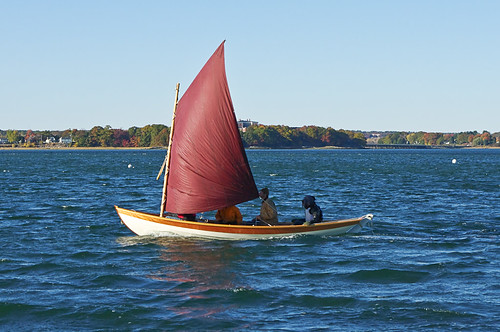The Perfect Rowboat, Sailboat, or Both?

Do you like the idea of a boat that can row and sail but they often don't like the idea of compromising on one or the other? It is a trade-off. A good sailboat's lines are not good for rowing and a rowboat's lines are not good for sailing. The latter is true mainly because the hull is quite narrow and fine on the waterline, especially at the ends. A fast rowboat's lines just don't provide the stability, often, for sailing and the addition of a slot for the board introduces drag and makes the boat slow for rowing. Wooden Boat's long time manager of their boathouse often cites the Joel White Shearwater as an example. Reluctantly, listening to customer demand, Joel White added the centerboard and it really made a difference in the sailing ability: it made it possible. But it also introduced noticeable drag when rowing: the boat was slower under oars.
is very similar to Shearwater, only narrower and longer on the waterline, no daggerboard, and therefore faster under oars.
because of the moderate keel to provide some lateral resistance and enable excellent tracking for rowing. We don't have a centerboard, so there is no drag induced (though a tight fitting plug for a daggerboard trunk can fair the slot to the hull reasonably well). I've been asked a number of times, and I just will not add a daggerboard to Drake. She is just a blast to sail downwind and can sail as high as a beam reach quite fast. The sail adds tremendous range when you consider the sail as auxiliary power.

But if you want to sail upwind, and row well, you need a boat with a lot of flare in the hull and a shape that provides excellent secondary stability. Joel White's Shearwater and his 18' version of the boat are good examples. Another ideal example is the dory. What I love about the dory is that it is narrow at the waterline and flares out to a generous width, for a rowboat, at the rail, usually 4'8-5'. The Deblois Street Dry is nearly 5' at the rail. The stability this shape produces lends itself to sailing (see photo of me sitting on D St D's gunwale), but the narrow width at the waterline when the boat is not heeled means that it will row well. The double ended shape of the waterline on a dory keeps the ends fine for rowing ability. Drake shows a similar shape (see photo): narrow waterline, 4'1" at the gunwales provides secondary stability.
The Marblehead Gunning Dory is, to me, perhaps the perfect boat. If I could have only one boat (let's not think about that...what a shame that would be!), I would have a gunning dory or a Swampscott Dory. Come to my annual
to see both of these dory types in the flesh and meet two experts on dories: Sam Manning and Walter Wales.
Thank you to Chris Partridge, blogger in the UK:
for bringing up the subject of rowing vs sailing characteristics in a boat
Invitation to Fall Shop Talk & Messabout in Portland, Maine


Please join me for the 2nd annual – “It’s a tradition now” – shop talk and messabout. This year we’ll welcome our guest designer/builder Walter Wales. Also with him will be WoodenBoat’s Associate Editor Karen Wales (Walter’s wife) and renowned illustrator Sam Manning and his wife Susan.
Walter is an acknowledged expert on the Marblehead Gunning Dory originally built by Will Chamberlain of
Walter and Karen will bring their Gunning Dory REPUBLICAN, built in 1960 by Capt Gerald Smith from Will Chamberlain’s molds.
Walter and Sam will talk about the history, design, construction, and use of this famous dory type. In addition to REPUBLICAN we’ll have a couple other dories on site to look at and discuss.
Bring a boat because afterward we’ll head to
WHAT: 2nd Annual Shop Talk & Messabout
WHERE:
MAP: http://tinyurl.com/ClintShop
CCBB Blog ClintChaseBoatbuilder.blogspot.com
New Francois Vivier designed Yawl with Clint Chase

 Francois Vivier and Clint Chase are busy designing a new dayboat/weekender. This has been a fun collaboration and we have a lot more work to do. By this time next year, it is planned that we will be building this boat in our shop for our family use and for showing in 2012. Francois's boats are designed with a CAD-CAM approach, meaning the drawings are done in the computer, files are generated, and these files can be used to do CNC cutting of all the drawn boat parts, such as bulkheads, molds, and planking. Some of the design requirements were:
Francois Vivier and Clint Chase are busy designing a new dayboat/weekender. This has been a fun collaboration and we have a lot more work to do. By this time next year, it is planned that we will be building this boat in our shop for our family use and for showing in 2012. Francois's boats are designed with a CAD-CAM approach, meaning the drawings are done in the computer, files are generated, and these files can be used to do CNC cutting of all the drawn boat parts, such as bulkheads, molds, and planking. Some of the design requirements were:· To be trailerable by an ordinary car, and therefore light, and be able to beach temporarily for loading/unloading.
· To have a large, wide and deep cockpit, comfortable, allowing for fishing and a place where children could be safe.
· To have a stable hull for family sailing but give excellent performance for weekend sails “with the guys”.
· To have a cuddy cabin, with a toilet for women and children, a small galley to heat some meals and two berths to spend a night or two on board, or for napping.
What I am most excited about is getting my kids out sailing again.
Free Goat Island Skiff Yawl Plan





